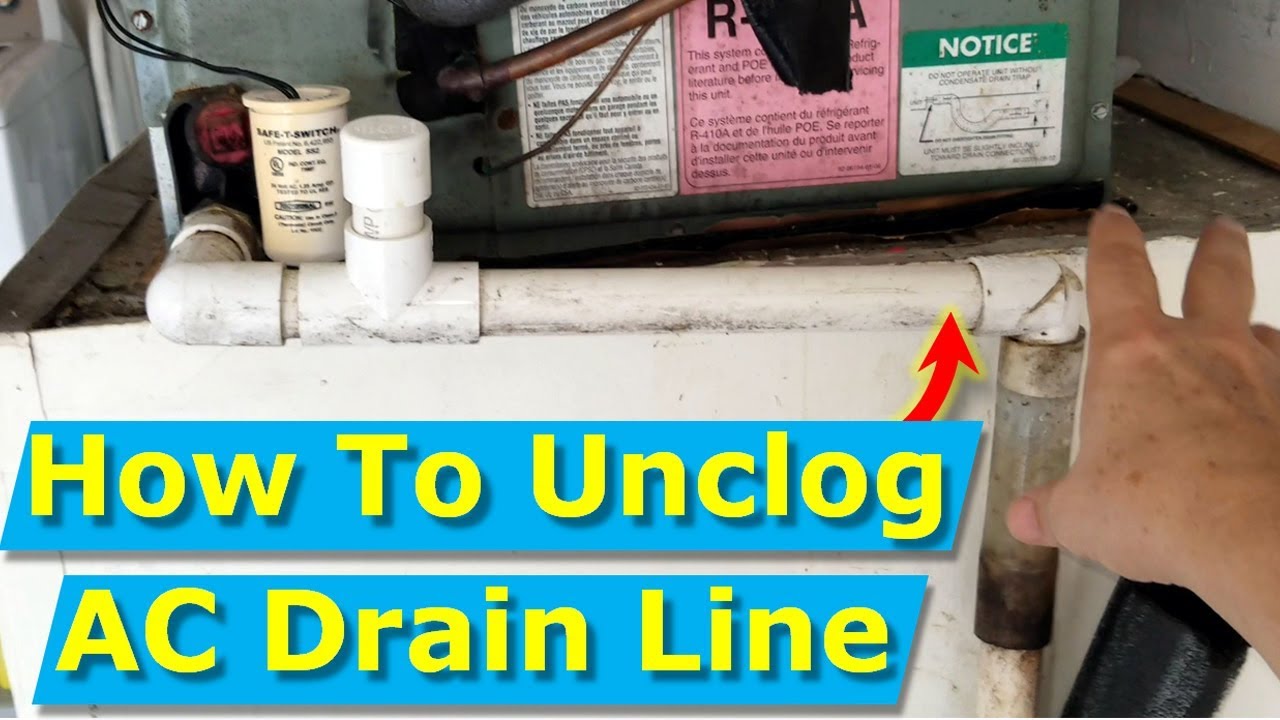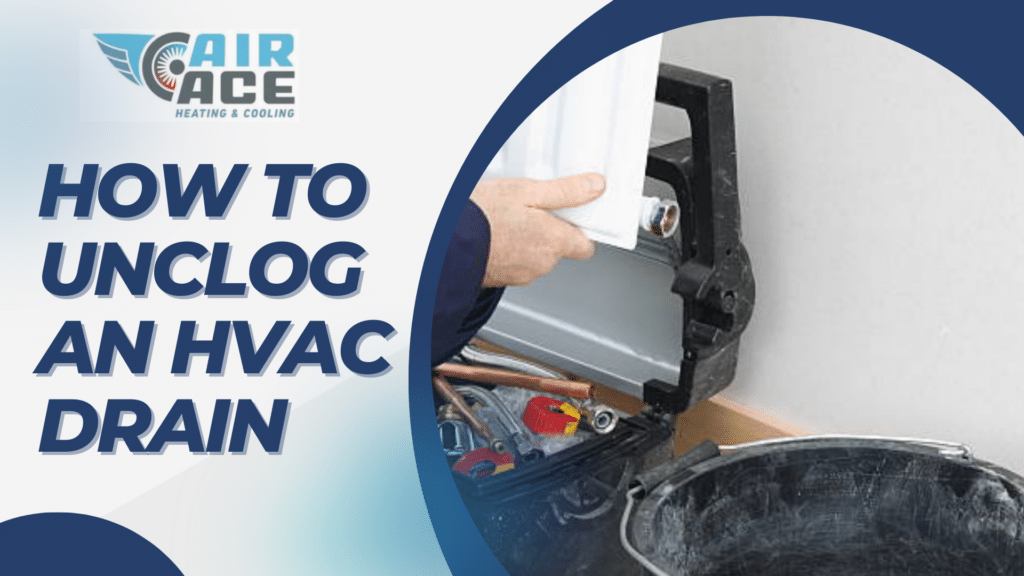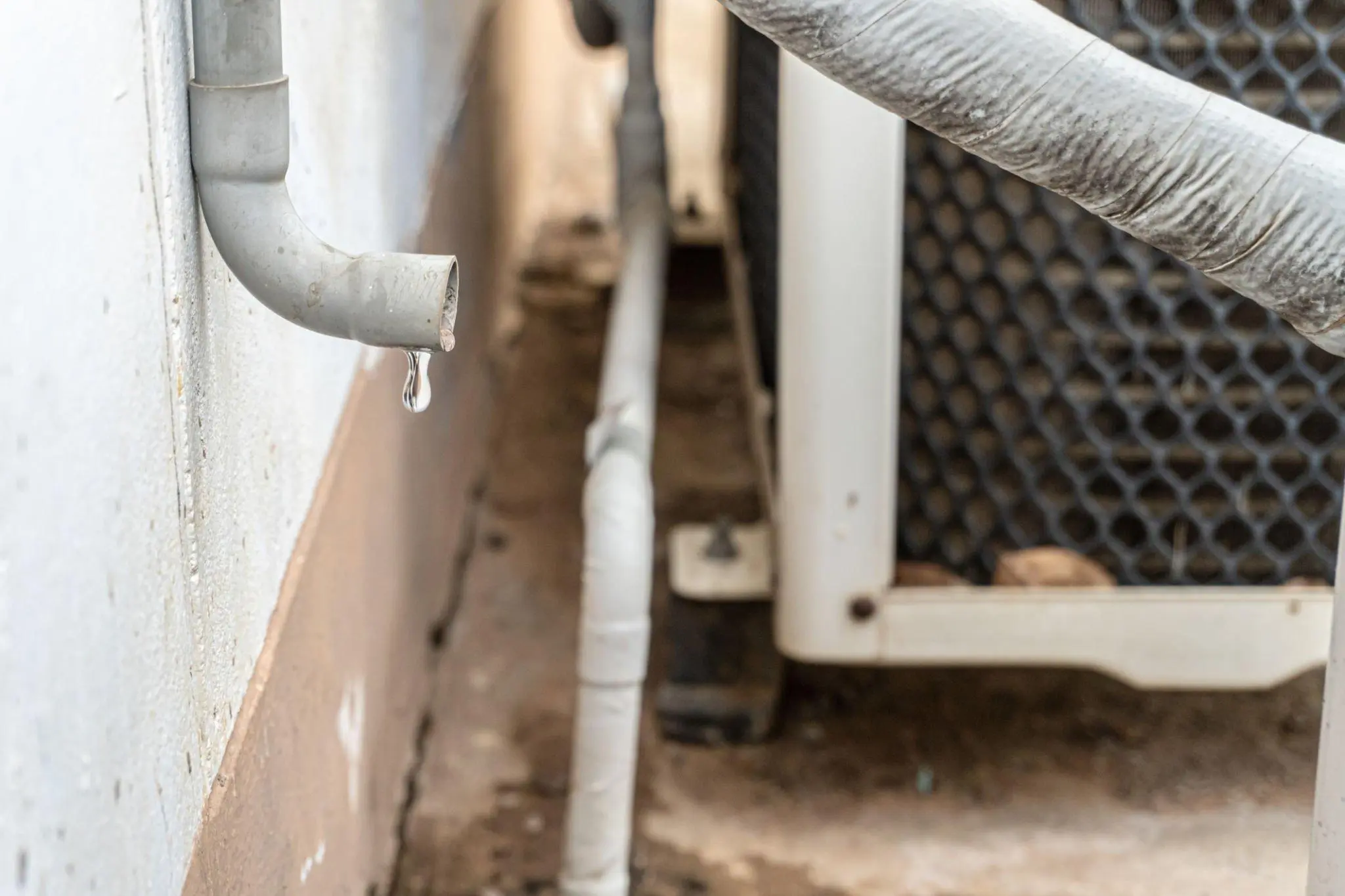How To Unclog Air Conditioner Drain Line Outside

A clogged air conditioner drain line is a frustratingly common problem for homeowners, especially during peak cooling seasons. You might notice water stains on your ceiling, a musty odor, or even worse, water overflowing from your indoor unit. This isn't just an annoyance; a blocked drain line can lead to mold growth, water damage, and eventually, expensive repairs. The good news is that many clogs can be easily addressed with some simple DIY troubleshooting.
Diagnosing the Clog
Before you grab any tools, let's confirm that the drain line is indeed the culprit. Here's how to diagnose the problem:
- Check for Standing Water: Look at your indoor AC unit. Is there water pooling around it? This is a strong indicator of a clog.
- Inspect the Drain Pan: Locate the drain pan beneath your indoor unit. Is it full of water? If so, the drain line isn't doing its job.
- Look for Water Stains: As mentioned earlier, ceiling or wall stains near the AC unit are a tell-tale sign of a clogged or overflowing drain line.
- Musty Odor: A persistent musty smell can indicate mold growth caused by trapped moisture from a blocked drain.
- Listen for Gurgling: A gurgling sound coming from the drain line could mean water is struggling to pass through a blockage.
Once you've confirmed a likely clog, it's time to find the outdoor drain line.
Locating the Outdoor Drain Line
The outdoor drain line is usually a PVC pipe that sticks out from your exterior wall, typically near the foundation of your house. It's generally a 1/2-inch to 3/4-inch pipe. If you have a heat pump system, there might be two drain lines – one for the AC and one for the heat pump’s defrost cycle. Make sure you're addressing the correct one!
DIY Fixes: Unclogging the Drain Line
Now for the hands-on part. Here are several methods you can try to unclog your AC drain line, starting with the simplest:
1. Wet/Dry Vacuum
This is often the most effective and safest method for clearing a drain line. You'll need a wet/dry vacuum and some duct tape or a similar sealing tape.
- Turn off the AC unit: Always disconnect power to the AC unit at the breaker box before working on it to prevent electrical shock.
- Locate the drain line opening: Find the end of the drain line outside your house.
- Attach the vacuum: Place the vacuum hose over the drain line opening. If the hose doesn't fit snugly, use duct tape to create a tight seal. This is crucial for creating sufficient suction.
- Vacuum for 15-20 minutes: Turn on the vacuum and let it run for about 15-20 minutes. The strong suction should dislodge and remove the clog. You might hear gurgling sounds as the clog breaks up.
- Check for drainage: After vacuuming, remove the hose and watch for water to drain freely from the pipe. If water is flowing, you've successfully cleared the clog!
- Repeat if necessary: If water still isn't flowing, repeat the process.
- Turn the AC back on: Once you're confident the line is clear, turn the AC unit back on at the breaker.
2. Pouring Vinegar
Vinegar is a natural and safe way to dissolve minor clogs and prevent future build-up. It works best for clogs caused by algae or mineral deposits.
- Turn off the AC unit: Again, disconnect power at the breaker.
- Locate the drain line opening: Find the end of the drain line outside your house.
- Pour vinegar into the drain line: Carefully pour about 1 cup of white vinegar into the drain line. A funnel can be helpful to prevent spills.
- Let it sit for 30 minutes: Allow the vinegar to sit in the drain line for at least 30 minutes to break down the clog. For tougher clogs, you can let it sit for a few hours or even overnight.
- Flush with water: After soaking, flush the drain line with water from a garden hose. Use a gentle stream to avoid damaging the pipe.
- Check for drainage: Observe if water is now draining freely from the pipe.
- Repeat if necessary: If the clog persists, repeat the vinegar soak and flush.
- Preventative Maintenance: Even if the clog is cleared, consider pouring a cup of vinegar down the drain line every month or two as preventative maintenance.
- Turn the AC back on: After confirming clear drainage, restore power to the AC.
3. Using a Stiff Wire or Plumbing Snake
For tougher clogs, you might need to use a stiff wire (like a coat hanger straightened) or a small plumbing snake. Be extremely careful with this method, as you don't want to puncture or damage the drain line.
- Turn off the AC unit: As always, disconnect power.
- Locate the drain line opening: Find the end of the drain line outside.
- Insert the wire or snake: Carefully insert the wire or snake into the drain line, gently pushing and twisting to break up the clog. Do not force it! If you encounter strong resistance, try a different angle or method.
- Work the clog loose: Continue working the wire or snake back and forth to loosen the clog.
- Remove the wire or snake: Slowly remove the wire or snake, cleaning off any debris.
- Flush with water: Flush the drain line with water from a garden hose to remove any remaining debris.
- Check for drainage: Observe if water is now draining freely.
- Repeat if necessary: If the clog persists, repeat the process.
- Turn the AC back on: Once clear, restore power to the AC.
4. Using a Garden Hose
This method can sometimes dislodge clogs by using water pressure. However, be careful not to apply too much pressure, which could damage the drain line or the AC unit itself.
- Turn off the AC unit: Disconnect power before starting.
- Locate the drain line opening: Find the end of the drain line outside.
- Attach the garden hose: Carefully insert the end of the garden hose into the drain line opening. You might need to wrap a towel around the connection to create a tighter seal.
- Turn on the water: Turn on the water to a low or medium pressure. Do not use full pressure, as this could damage the system.
- Observe for drainage: Watch for water to drain freely from the drain line.
- Brief Bursts: Try turning the water on and off in short bursts to help dislodge the clog.
- Remove the hose: Once water is flowing freely, remove the garden hose.
- Check for Leaks: Inspect the area around the AC unit and drain line for any leaks.
- Turn the AC back on: Restore power to the AC after confirming clear drainage.
When to Call a Professional
While these DIY methods can resolve many drain line clogs, there are situations where you should immediately call a professional HVAC technician:
- Persistent Clog: If you've tried all the above methods and the drain line remains clogged, it's likely there's a more serious blockage or a problem within the AC unit itself.
- Visible Mold: If you see extensive mold growth around the AC unit or in the drain pan, it's important to have it professionally removed and to identify the underlying cause.
- Refrigerant Leak: If you suspect a refrigerant leak (e.g., hissing sound, oily residue), do not attempt to fix it yourself. Refrigerant is harmful and requires specialized handling.
- Damaged Drain Line: If the drain line is cracked, broken, or severely damaged, it needs to be repaired or replaced by a professional.
- Frozen Evaporator Coil: A clogged drain line can sometimes cause the evaporator coil (inside the indoor unit) to freeze. If you see ice buildup on the coil, turn off the AC immediately and call a professional. Running the AC with a frozen coil can cause serious damage.
- Uncertainty: If you're uncomfortable working with electrical or plumbing systems, or if you're simply unsure about what to do, it's always best to err on the side of caution and call a professional.
Preventative Maintenance
The best way to avoid clogged drain lines is through regular preventative maintenance. Here are a few tips:
- Regularly Pour Vinegar: Pour a cup of white vinegar down the drain line every month or two to prevent algae and mineral buildup.
- Clean the Drain Pan: Periodically clean the drain pan beneath your indoor unit to remove any standing water and debris.
- Professional AC Tune-up: Schedule a professional AC tune-up at least once a year. A technician can inspect and clean the drain line as part of the service.
- Air Filter Replacement: Change your air filters regularly. Dirty air filters restrict airflow, which can lead to the evaporator coil freezing and causing drain line problems.
By following these troubleshooting steps and preventative measures, you can often resolve AC drain line clogs yourself, saving time and money. However, remember that safety is paramount. If you're ever unsure about what to do, don't hesitate to call a qualified HVAC technician.










